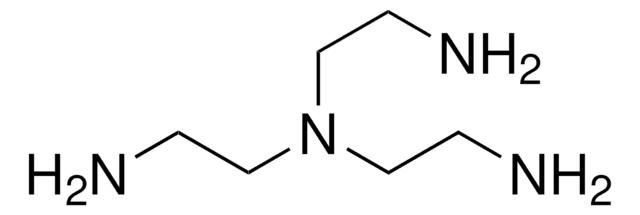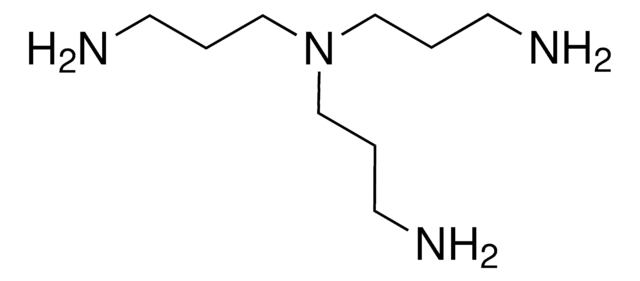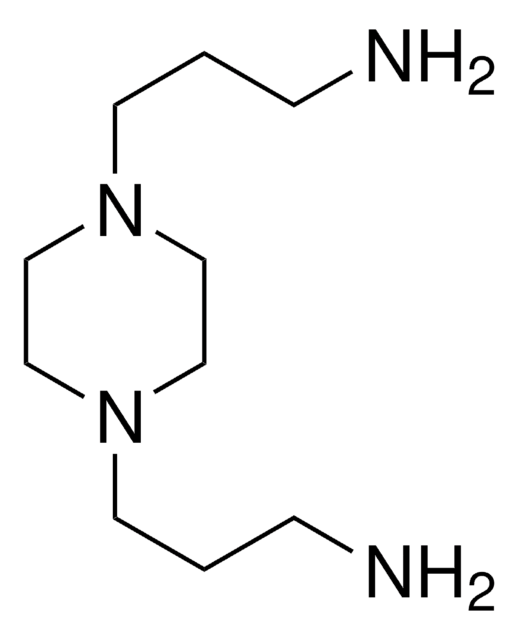I1006
Bis(3-aminopropyl)amine
98%
Synonyme(s) :
BAPA, 3,3′-Diaminodipropylamine, 3,3′-Iminodipropylamine, N-(3-Aminopropyl)-1,3-propanediamine, Dipropylenetriamine, Norspermidine
About This Item
Produits recommandés
Essai
98%
Indice de réfraction
n20/D 1.481 (lit.)
pb
151 °C/50 mmHg (lit.)
Pf
−14 °C (lit.)
Densité
0.938 g/mL at 25 °C (lit.)
Chaîne SMILES
NCCCNCCCN
InChI
1S/C6H17N3/c7-3-1-5-9-6-2-4-8/h9H,1-8H2
Clé InChI
OTBHHUPVCYLGQO-UHFFFAOYSA-N
Informations sur le gène
mouse ... Odc1(18263)
Vous recherchez des produits similaires ? Visite Guide de comparaison des produits
Catégories apparentées
Application
- To synthesize chitosan based hydrogels having potential biomedical applications.
- For the functionalization of nanoparticles to yield terminal −NH2 groups for further modifications.
- As an internal dispersing agent for the synthesis of water-dispersible polyurethanes.
- As a ligand in the preparation of [Cu(bapa)]2[Mo(CN)8]·7H2O photomagnetic coordination polymer.
Mention d'avertissement
Danger
Mentions de danger
Classification des risques
Acute Tox. 1 Inhalation - Acute Tox. 3 Dermal - Acute Tox. 4 Oral - Eye Dam. 1 - Muta. 2 - Skin Corr. 1A - Skin Sens. 1A - STOT RE 2
Organes cibles
thymus
Code de la classe de stockage
6.1A - Combustible acute toxic Cat. 1 and 2 / very toxic hazardous materials
Classe de danger pour l'eau (WGK)
WGK 2
Point d'éclair (°F)
242.6 °F - closed cup
Point d'éclair (°C)
117 °C - closed cup
Équipement de protection individuelle
Faceshields, Gloves, Goggles, type ABEK (EN14387) respirator filter
Faites votre choix parmi les versions les plus récentes :
Déjà en possession de ce produit ?
Retrouvez la documentation relative aux produits que vous avez récemment achetés dans la Bibliothèque de documents.
Notre équipe de scientifiques dispose d'une expérience dans tous les secteurs de la recherche, notamment en sciences de la vie, science des matériaux, synthèse chimique, chromatographie, analyse et dans de nombreux autres domaines..
Contacter notre Service technique











